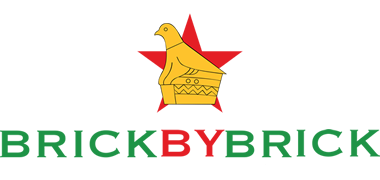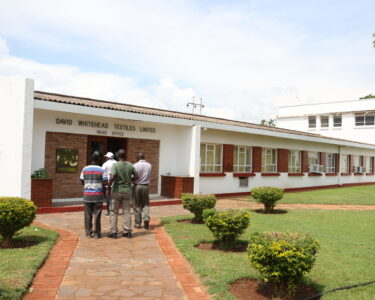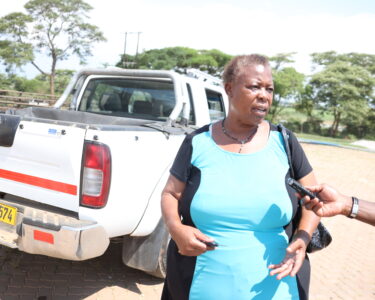The Chinhoyi University of Technology (CUT) manufactures the best vitamin mineral block lick for animals, both domestic and game. There is nothing like it in all of Zimbabwe. Farmers see a significant change in their animals within two weeks of feeding them with CUT’s licking blocks. The man behind this wonder product is Prof Irvin D.T. Mpofu, who in normal life is a professor of academic affairs and administration at CUT. But when Brick by Brick visited the university on 22 November 2022, Prof Mpofu had an additional job as acting vice chancellor. He spoke to us in that capacity and also as the leader of the research team that produced the remarkable vitamin mineral block lick that have taken Zimbabwe by storm. Below are excerpts of our conversation with Prof Mpofu.
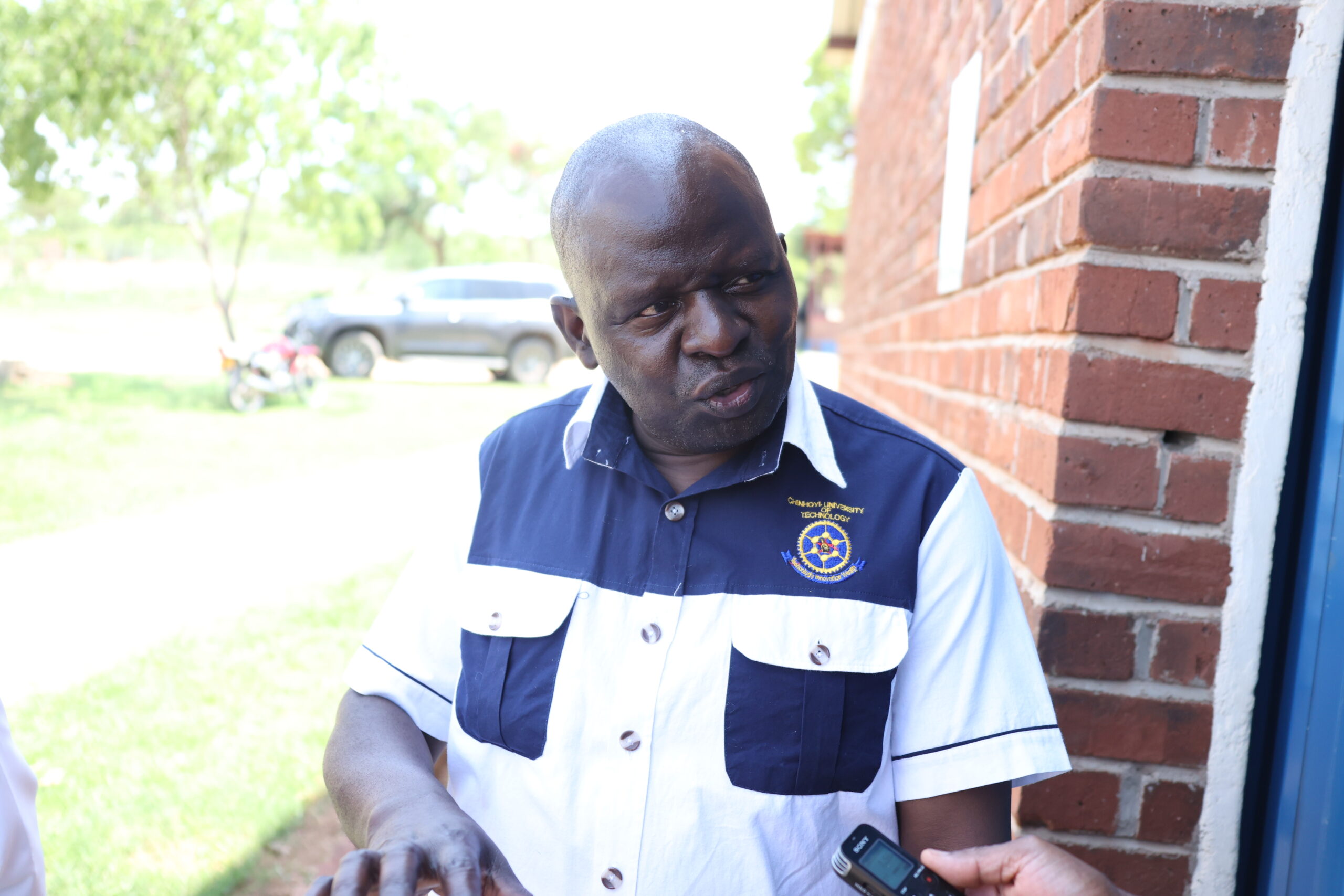
to 150 units per day. Our factory is going to be extended very soon’
What inspired him and his team?
Initially it is Education 5.0. Initially when I did my PhD in 1997, it was on mineral nutrition. I even produced a prototype licking block at the time. My work was on identifying mineral imbalances in animals and come up with a solution. So I produced a licking block, but during the era of Education 3.0, once you write a good thesis, it’s marked, you pass, and that’s it.
So when Education 5.0 came on board in 2017-2018, we had just received a research grant from NEPAD, and we said “okay let’s now actualise Education 5.0, let’s make sure that a research activity comes up with a prototype which can be massified, patented and commercialised”. And also Education 5.0 requires that there must be a distinct innovation. So the innovativeness of this product is basically in the formula which we did, using a process which we call “computer-aided feed formulation”.
The additional innovation in this product is that one of the major ingredients is what we can call “heritage”. The heritage which we utilised here is the heritage that we normally discard. It is basically ash from tobacco curing. Whenever you cure one ton of tobacco, you produce about 250 kg of ash.
And we took that ash, analysed it, and profiled all the minerals in it. We then checked this profile against the profile of the nutrient requirement of animals. We found some gaps and we had to fill the gaps so that we ended up with a licking block that supplied all the nutrients required by animals.
By doing so, we are utilising a natural resource, and we are also cleaning the environment because tobacco farmers know that ash is a nuisance. If you have heaps and heaps of it on a farm, it becomes an absolute nuisance and unsightly when it rains. Worse, wherever you have a heap of ash, nothing will grow there. So we have a lot of ash in this country which we can utilise and produce commercial products like you have seen here.
Our experience shows that the minerals that Zimbabweans generally import from outside the country is basically ash that has been mined from ash mines and has just been optimised. So when you are importing these minerals, you are actually importing ash from another country when we have lots and lots of ash in this country already.
So our product has taken the market by storm. We started with only two products – the summer and winter blocks for cattle, sheep and goats. Then we discovered that some farmers, and you know farmers always want to experiment, so some of them were actually using our blocks for horses and game animals. They then told us, “our animals are responding to your blocks”. So we decided to come up with another product, a variant which suits game animals. So we added two more products.
Thus, our Block Lick Press Factory now produces four products, and all of them have been registered properly by the Ministry of Agriculture’s Registrar of Feeds. Every year we renew our registration, and they agree with our claims from a nutritional point of view. The products are now found all over the country, and we are looking at how we can take it across our borders.
Even better, this project has been growing organically. It is the one that bought the generator that you see. We don’t have electricity at the moment, but the factory can still work using the power from the generator. This forklift you see was bought by this project. We also bought a minibus from this project. And all the workers here – yes, they are university employees, but they are paid by this project. We employ 14 workers here, at the project.
We are actually using this project as an example of what can be done nationwide. We want to replicate it throughout our university’s projects, so that all our factories and projects can stand alone and look after themselves and even put extra money into the university’s coffers.
The idea is to make sure that we actualise the Education 5.0 policy of the government, to make sure that as universities, we produce goods and services that are massifiable and commercialisable, so that we can also generate significant income streams to support the universities’ operations, and even come up with new projects.
If this can be emulated by all the 23 universities in the country, we will end up with a lot of commercial companies, and then the universities will make a very significant contribution to the government’s Vision 2030 programme.
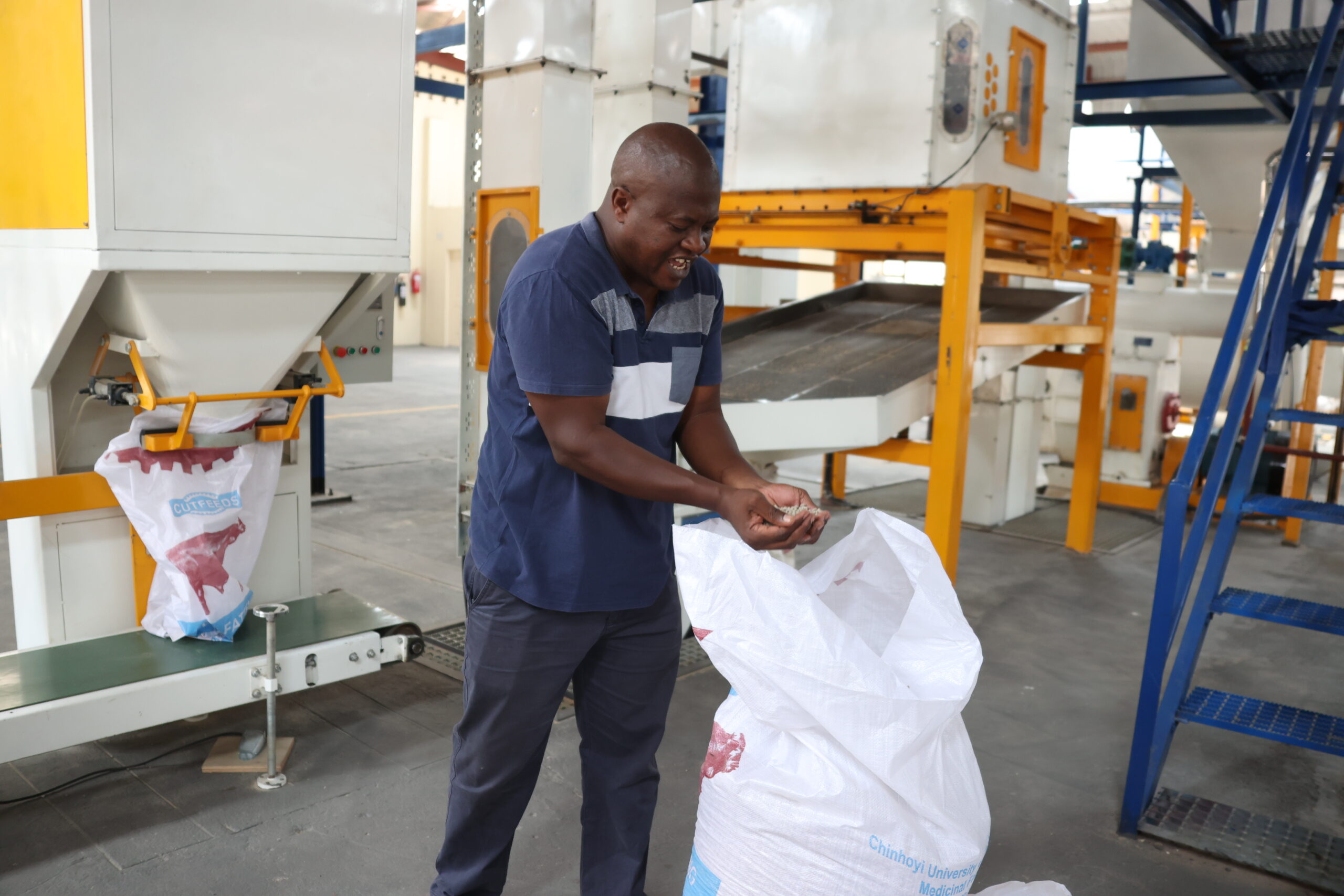
shows some of the feed pellets they are producing from the factory
What has been the response of farmers to the block licks?
What you need to do when you come up with a product from research, the research must be inclusive, you must involve the end-users. So when we started, we were actually making small blocks the size of bricks, because we wanted to have many units that could be loaded into say a double cab for distribution around the country.
Of course, you start working with farmers who will volunteer, you don’t force anyone. But you have to explain that the programme has got objectives, for example we are trying to advance Education 5.0 in line with what the government is saying.
When the farmers used the products and saw a change, because if you use these products, within 2 weeks you start seeing a change, your animals will look different – sleeky skin, they are healthy, and you don’t need to treat them.
So what happened was that the agricultural extension officers in the provinces where we took our products, when they wrote their monthly reports, they would say “CUT is testing this, this and this, and we are seeing this, this and this”. So we started receiving messages from their superiors saying “there is this thing you are doing, it looks like it is doing well.”
Then, we had to launch the product in Holiday Inn in Harare. Although we did it at a 3-star hotel, we took farmers from all over the country, those who were using the products, and brought them to Holiday Inn. The product was launched by the permanent secretary of the Ministry of Agriculture, and the farmers gave unsolicited testimonies. As a result, we managed to capture the market very quickly.
We are now planning to officially export the products. We haven’t officially started yet, but we know that when the products get to say Mutare, cross-border traders take it across to Mozambique. The other day we got a big truck come here to pick quite a number of the products. Later we found that the truck went across the border. But we want to do it officially.
We’ve got an order for about 2,000 units from Namibia but we don’t want to quickly say we will export. Because once the farmers in Namibia test the product, then the orders will be huge and our capacity at the moment may not sustain it.
At the moment we are producing about 120 to 150 units per day. Our factory is going to be extended very soon. We want to change the equipment so that we put in a system that can produce about 2,000 units per day. Once we do that, then we can confidently challenge the market. You know you don’t want to challenge the market, then you fail to deliver.
How are they protecting the product in terms of intellectual property rights?
With any product, once you see that it is marketable, you must package it properly so that when it goes on the market, as soon as people see the package, they will associate it with CUT.
Number 2: you have to do things legally, so all the feeds must be registered, and our feeds are registered with the Ministry of Agriculture’s feeds registration office. Then patenting is another thing. We have already filed patents with the Zimbabwe Intellectual Property Office and very soon we have a patent.
But let me say that you cannot completely stop people from copying the product, as long as the people copying it are Zimbabweans and they are copying and making products that improve our economy, it’s not a problem.
Of course, we don’t want this product to die. At the moment, I can tell you that there is a big company that used to buy from here and left us with a lot of money, but I understand they are now making their own blocks, but they cannot march what is here. They can’t.
When we started this, there were other licking blocks already on the market – some of them were imported from India and South Africa, and some of them were locally-made. But they are not as good as ours in terms of nutritional composition. We’ve got about 11 ingredients in ours, and they are very difficult to copy. But I agree with you, we need to protect our product.
So you are almost like Coca Cola?
Yeah, our formula, it will be very difficult to copy.

